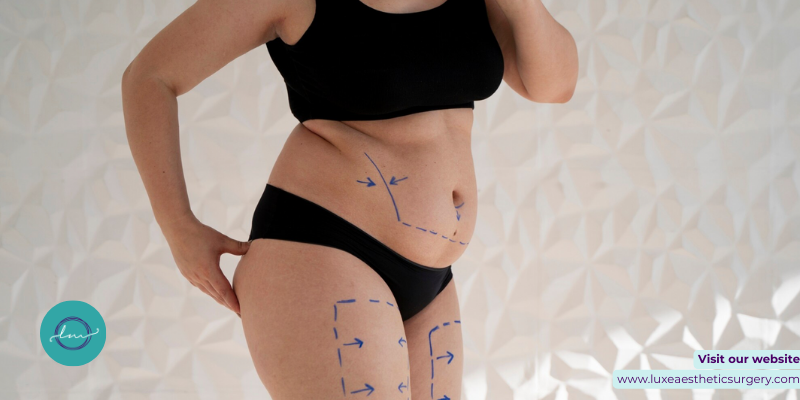What Happens to Your Body Years After Liposuction?
May-15-2025

Liposuction is one of the most popular cosmetic procedures worldwide, well-known for its ability to remove stubborn fat and contour the body. While the immediate results of liposuction can be striking, many patients wonder about the long-term effects. What does your body look and feel like years after liposuction? Does fat return? Can the results fade?
This article provides a comprehensive look at what happens to your body years after liposuction, including the science of fat cells, potential changes in body shape, long-term maintenance, cost considerations, and frequently asked questions.
Understanding Liposuction: A Quick Recap
Liposuction is a surgical procedure that removes fat deposits from specific areas of the body through suction. It is typically performed on:
-
Abdomen and waist
-
Thighs and hips
-
Upper arms
-
Back and bra area
-
Chin and neck
Liposuction is not a weight-loss solution. Instead, it’s a body contouring treatment used to target fat that doesn’t respond to diet or exercise. The fat cells removed during liposuction are permanently eliminated from the treated area.
What Happens to Your Body 1–5 Years After Liposuction?
Fat Cells Are Gone Permanently (In Treated Areas)
Once liposuction removes fat cells from a targeted area, those particular cells do not regenerate. However, remaining fat cells elsewhere in the body can still expand with weight gain. This means that if you maintain a stable weight, the contours created by liposuction will remain consistent.
Treated Areas Retain a Slimmer Appearance
Most patients who stay at or near their post-liposuction weight continue to enjoy a more sculpted appearance in the treated zones. Even with minor weight fluctuations, these areas tend to remain more proportionate compared to untreated areas.
Skin May Adapt or Sag Over Time
Your skin’s elasticity plays a key role in how well your results age. In younger patients with good skin tone, the skin typically retracts smoothly over the newly contoured shape. However, over the years, natural aging may cause sagging or looseness, especially in patients who lose significant weight after the procedure.
Lifestyle Determines Long-Term Success
Those who maintain healthy eating habits and exercise regularly will retain their results longer than those who return to sedentary habits or poor nutrition. A poor lifestyle can lead to new fat accumulation in untreated areas such as the upper arms, back, face, or thighs.
What Happens 5–10+ Years After Liposuction?
Body Shape Remains Sculpted — With Conditions
Ten years after liposuction, many patients still retain the improved contour achieved through the procedure—as long as they haven’t experienced significant weight gain. The results can age well if combined with a healthy lifestyle, proper hydration, and good skincare.
Fat May Redistribute to Untreated Areas
While fat does not “return” to treated areas in the same amount, your body can still store fat elsewhere if you gain weight. In some cases, this redistribution can make untreated zones appear disproportionate. This is why many patients emphasize whole-body fitness after liposuction.
Aging Still Happens
Liposuction does not prevent the natural aging process. Skin elasticity reduces with time, muscles may loosen, and hormones can affect fat distribution. Over the years, some touch-up procedures or skin-tightening treatments may be desired to maintain youthful contours.
Cost of Liposuction in the USA (All-Inclusive)
The cost of liposuction can vary based on the surgeon’s experience, location, facility fees, anesthesia, and the number of areas treated. Below is a general price range in USD:
| Treatment Area | Average Total Cost (USD) |
|---|---|
| Chin / Neck | $2,500 – $4,000 |
| Upper Arms | $3,000 – $5,000 |
| Abdomen (Upper & Lower) | $4,000 – $7,500 |
| Hips / Flanks (Love Handles) | $3,500 – $6,500 |
| Inner / Outer Thighs | $4,000 – $6,500 |
| Back or Bra Line | $3,000 – $6,000 |
| Multiple Areas / Full Body | $8,000 – $15,000+ |
Note: These prices typically include pre-op consultations, anesthesia, surgical fees, garments, and follow-up visits. Financing options are often available.
How to Maintain Liposuction Results for the Long Term
To enjoy your liposuction results for a decade or longer, it’s important to:
Maintain a Stable Weight
Large weight fluctuations can undo your results. Aim to stay within 5–10 pounds of your post-lipo weight.
Exercise Regularly
Incorporate a mix of cardio and strength training 3–5 times per week to maintain muscle tone and prevent new fat buildup.
Follow a Balanced Diet
Focus on whole foods, lean proteins, vegetables, and healthy fats. Limit sugar, alcohol, and processed foods.
Stay Hydrated and Sleep Well
Hydration and rest play a key role in maintaining healthy skin tone and metabolism.
Monitor Hormonal Changes
Hormonal fluctuations due to pregnancy or menopause can impact fat distribution. Regular health check-ups and early intervention help maintain results.
Pros and Cons Years After Liposuction
Long-Term Benefits:
-
Permanent reduction of fat cells in treated areas
-
More contoured and proportionate appearance
-
High patient satisfaction when combined with healthy lifestyle
-
Improved fit in clothing and enhanced body confidence
Possible Challenges:
-
Fat gain in untreated areas with lifestyle neglect
-
Skin sagging if major weight loss occurs post-surgery
-
Effects of aging cannot be stopped
-
May require touch-up procedures or non-surgical maintenance over time
FAQs – Liposuction Results Years Later
Can fat come back after liposuction?
Fat cells removed by liposuction do not grow back. However, remaining fat cells in other areas can expand if you gain weight, potentially changing your body shape.
How long do liposuction results last?
With proper maintenance, results can last 10–15 years or more. Many patients retain visible improvements for life.
Will aging ruin my liposuction results?
Not necessarily. While skin may lose elasticity and the body may change due to age, the fat reduction remains permanent. Combining liposuction with a healthy lifestyle helps offset aging effects.
Is a second liposuction ever needed?
In some cases, patients opt for touch-ups or additional contouring years later. This is typically based on new weight gain, hormonal changes, or natural aging—not because the original results “wore off.”
Does liposuction improve metabolism?
No. Liposuction removes fat cells but does not boost your metabolism. Diet and exercise are still essential to keep the weight off.
Final Thoughts
Liposuction offers long-term benefits for individuals seeking to sculpt specific areas of their body and remove stubborn fat. However, the procedure is not a substitute for weight management or a healthy lifestyle. Years after liposuction, your body can still change due to aging, hormonal shifts, or lifestyle choices—but the fat cells removed during the procedure are gone for good.
If you're planning to undergo or have already had liposuction, the key to enjoying lasting results lies in how you treat your body afterward. With mindful maintenance, liposuction can provide aesthetic benefits that last for decades.











Luxe Team